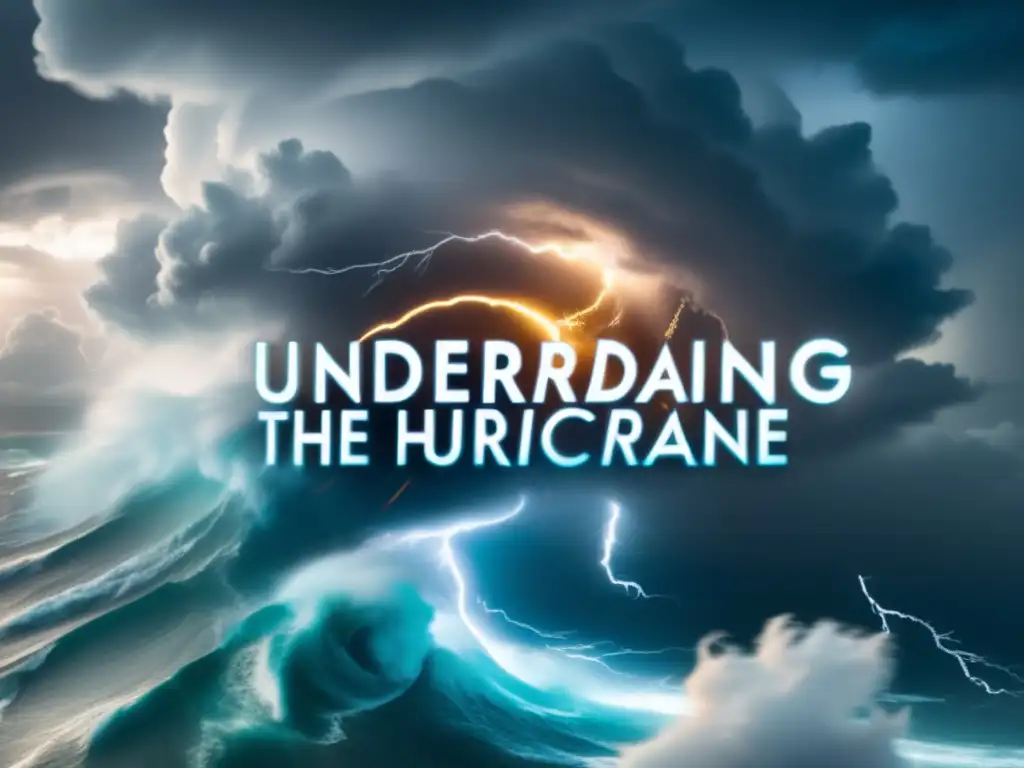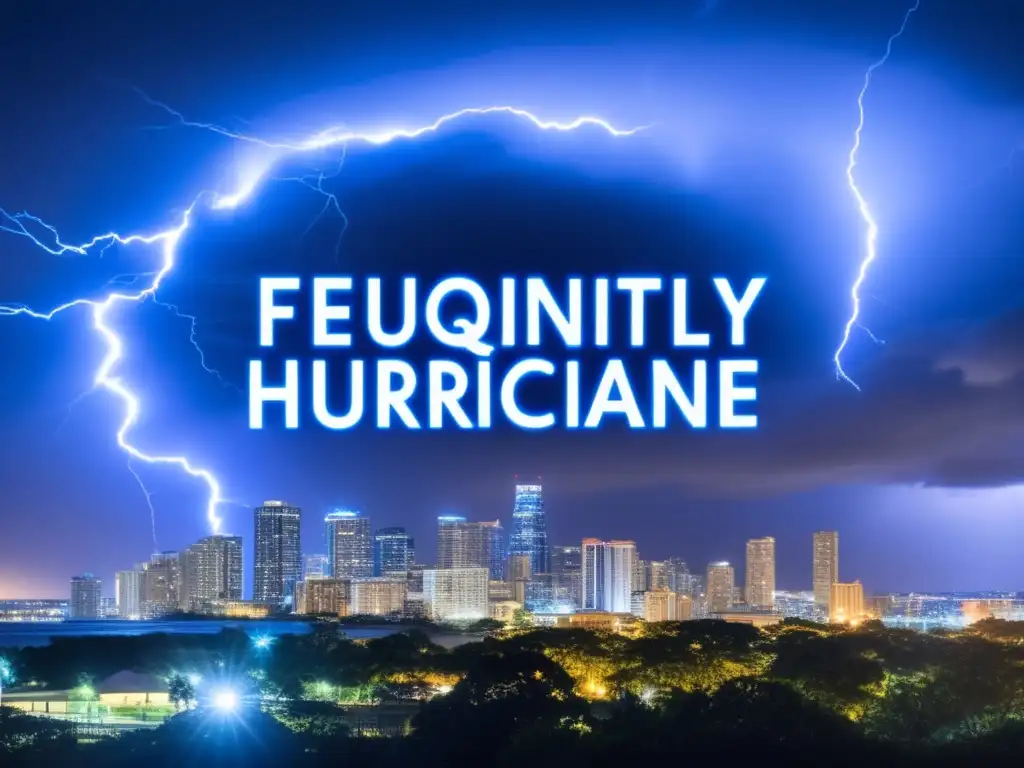The Anatomy Of A Hurricane: Understanding The Basics

The Anatomy of a Hurricane: Understanding the Basics
Introduction
Hurricanes are one of the most powerful and destructive natural disasters on earth. They can cause significant damage to property, infrastructure, and result in loss of human life. The 2020 Atlantic hurricane season, for instance, brought about 30 named storms, with 13 reaching hurricane status, and six being major hurricanes.
Hurricane-prone areas like the Caribbean, Gulf of Mexico, and the southeastern coast of the United States need to be adequately prepared for hurricane season. A crucial aspect of preparedness is to understand the anatomy of a hurricane and how it forms. This article provides an in-depth overview of the anatomy of a hurricane and its basic features.
Understanding the Anatomy of a Hurricane

A hurricane is a type of tropical cyclone that forms over warm ocean waters. The Anatomy of a hurricane consists of three primary components: the eye, the eyewall, and the rainbands.
The Eye
The eye is the calm center of a hurricane, typically 20-50 miles wide. It is surrounded by the eyewall, which is a ring of intense thunderstorms around the eye. Despite the eye being a relatively clear and calm area, it does not necessarily mean that the worst part of the hurricane has passed. Instead, the eyewall, where the highest winds and heaviest rains are located, is the most dangerous part of a hurricane.
The Eyewall
The eyewall is the most violent part of the hurricane, and it surrounds the eye. This is where the strongest sustained winds occur, often exceeding 100 mph, with gusts higher than that. The eyewall also has the heaviest rainfall rates, causing significant flooding. This is the most dangerous part of the storm, with the highest likelihood of significant damage and loss of life.
The Rainbands
The rainbands are the outermost part of the hurricane, located farthest from the eye. They are composed of clouds and thunderstorms that spiral inward towards the center of the storm. These bands of precipitation can extend hundreds of miles from the eye and are often responsible for heavy rainfall and flooding thousands of miles away from the hurricane's center.
How Do Hurricanes Form?

Hurricanes form in warm tropical waters, typically at least 80°F, where there is enough moisture and instability in the atmosphere to fuel their development. The warm ocean waters provide the energy needed to power the storm, causing warm, moist air to rise and cool down, forming clouds.
As more moisture and heat are drawn into the developing storm, a low-pressure center is created. This draws more air into the system, causing it to spin and eventually form a tropical storm. If the storm continues to intensify, it can become a hurricane.
Hurricane Categories
The Saffir-Simpson Hurricane Wind Scale classifies hurricanes into five categories based on their sustained winds:
- Category 1: winds 74-95 mph
- Category 2: winds 96-110 mph
- Category 3: winds 111-129 mph
- Category 4: winds 130-156 mph
- Category 5: winds over 157 mph
Category 3, 4, and 5 hurricanes are considered major hurricanes and are the most destructive. As mentioned earlier, the eyewall is the most dangerous part of a hurricane, where the strongest winds and heaviest rains occur.
Important Terms to Know

It's essential to know some crucial terms when it comes to hurricanes. Here are some of the most important:
- Tropical Disturbance: an area of low pressure with organized thunderstorms but no closed circulation
- Tropical Depression: when a tropical disturbance develops a closed circulation with maximum sustained winds below 39 mph.
- Tropical Storm: a tropical depression that has intensified, with maximum sustained winds of 39-73 mph
- Storm Surge: a rise in sea level caused by the hurricane's winds and low-pressure center. This can cause significant flooding along the coast.
- Flash Flooding: rapid flooding caused by heavy rain, typically in areas with poor drainage or in low-lying areas.
- Inland Flooding: flooding caused by the rainfall from the hurricane occurring well away from the storm's eye.
Preparing for a Hurricane

Preparation is key to protecting yourself, your family, and your property during a hurricane. Here are some essential tips:
- Stay informed: Monitor weather reports and stay up-to-date on all hurricane-related news.
- Prepare an emergency kit: This should include necessities such as food, water, first aid kit, and flashlights.
- Secure your property: Bring in loose outdoor items, trim tree branches, and secure windows and doors.
- Have an evacuation plan: If ordered to evacuate, know where you will go and how you will get there.
Frequently Asked Questions

-
What is the difference between a tropical storm and a hurricane?
A tropical storm is a storm with maximum sustained winds of 39-73 mph, while a hurricane has maximum sustained winds of 74 mph or higher.
-
What is the most dangerous part of a hurricane?
The eyewall, where the highest winds and heaviest rains occur, is the most dangerous part of a hurricane.
-
What is storm surge?
Storm surge is a rise in sea level caused by the hurricane's winds and low-pressure center. This can cause significant flooding along the coast.
-
How do I prepare for a hurricane?
Stay informed, prepare an emergency kit, secure your property, and have an evacuation plan.
-
What is the Saffir-Simpson Hurricane Wind Scale?
The Saffir-Simpson Hurricane Wind Scale classifies hurricanes into five categories based on their sustained winds.
Conclusion
In conclusion, understanding the anatomy of a hurricane is crucial to staying safe and being adequately prepared before, during, and after a storm. It's essential to know the different components that make up a hurricane, how they form, and their potential impact. Living in a hurricane-prone area requires diligence and preparation. Stay informed, prepare an emergency kit, and have an evacuation plan in place. By following these steps, you can help protect yourself and your loved ones during a hurricane.
Additional Resources

 The Birth Of A Hurricane: How Hurricanes Form
The Birth Of A Hurricane: How Hurricanes Form Eye Of The Storm: What Happens Inside A Hurricane's Eye
Eye Of The Storm: What Happens Inside A Hurricane's Eye Wind Patterns And Hurricanes: An In-depth Look
Wind Patterns And Hurricanes: An In-depth LookIf you want to discover more articles similar to The Anatomy Of A Hurricane: Understanding The Basics, you can visit the Basic knowledge about hurricanes: category.
Leave a Reply

Articulos relacionados: